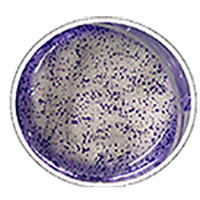Overexpression of MYBL2 predicts poor prognosis and promotes oncogenesis in endometrial carcinoma

Accepted: 20 March 2021
Supplementary: 100
HTML: 9
All claims expressed in this article are solely those of the authors and do not necessarily represent those of their affiliated organizations, or those of the publisher, the editors and the reviewers. Any product that may be evaluated in this article or claim that may be made by its manufacturer is not guaranteed or endorsed by the publisher.
Authors
Endometrial cancer (EC) is the most common gynecologic malignancy and still remains clinically challenging. We aimed to explore the potential biomarkers of EC and provide a theoretical basis for early screening and targeted therapy. The available transcriptome data from the Cancer Genome Atlas (TCGA) and Gene Expression Omnibus (GEO) were analyzed to identify differentially expressed genes. Immunohistochemistry was performed to detect gene expression. We analyzed the associations of MYBL2 with clinicopathological features and survival time and the biological effect of MYBL2 on the proliferation of EC cells. The effect of MYBL2 silencing on the transcriptome of EC cell model was analyzed by RNA-Seq. MYBL2 was significantly upregulated with obvious copy number alteration (CNA) in EC. Copy number amplification significantly increased MYBL2 mRNA expression, which led to a poor prognosis and severe pathological types of EC. Additionally, MYBL2 silencing significantly inhibited proliferation and induced apoptosis and G1-phase cell cycle arrest in EC cell lines. Our results indicate that MYBL2 is closely related to the cell cycle and apoptosis pathways in EC. The findings in this study provide evidence that MYBL2 can serve as a new candidate prognostic marker and a target for future therapeutic intervention in EC.
How to Cite
PAGEPress has chosen to apply the Creative Commons Attribution NonCommercial 4.0 International License (CC BY-NC 4.0) to all manuscripts to be published.

 https://doi.org/10.4081/ejh.2021.3226
https://doi.org/10.4081/ejh.2021.3226






